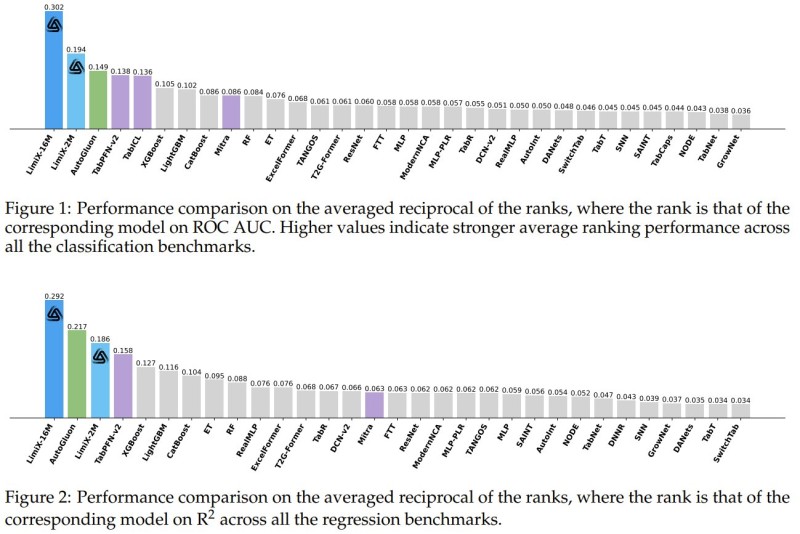⬤ LimiX just rolled out its new structured-data foundation models, LimiX-2M and LimiX-16M, and they're making some serious waves in how we handle tabular datasets. Both models treat tables as joint distributions over variables and missingness, which lets them tackle all kinds of different tasks without needing special tuning for each one. The benchmark results that came with the announcement show these models can adapt on the fly with query-based conditional prediction while keeping accuracy rock-solid even in tricky data situations.

⬤ Looking at the performance charts, LimiX-16M is absolutely dominating the classification benchmarks, hitting an averaged reciprocal rank over 0.30—way ahead of big names like AutoGluon, TabPFN-v2, XGBoost, and CatBoost. LimiX-2M's holding its own too, landing right up there with the top performers even though it's the smaller model. When it comes to regression testing, LimiX-16M takes the crown again with an averaged reciprocal rank close to 0.29, with AutoGluon and LimiX-2M coming in behind.
These results highlight consistency across both task types and confirm the models' ability to scale effectively on larger datasets while remaining efficient in settings with missing data, small sample sizes, or high-dimensional features.
⬤ What really makes LimiX stand out is that its architecture handles classification, regression, imputation, and data generation all through one unified model. That kind of flexibility, paired with open-source availability under the Apache 2.0 license, makes LimiX-2M a solid pick for situations where resources are tight, while LimiX-16M is built for heavier workloads. The rankings across 11 structured-data benchmarks prove both versions consistently outperform other popular approaches like TabNet, LightGBM, and SAINT.
⬤ This release is a big deal in the fast-growing world of generalist AI systems, especially since structured data is one of the most commercially important data types out there. Hitting state-of-the-art results across such a wide range of tasks puts LimiX right up there, competing with both traditional machine-learning models and newer foundation-model approaches. With open-source access and proven scaling for tabular models, the LimiX framework could shake up how we approach enterprise analytics, automated data science, and multimodal AI systems going forward.
 Marina Lyubimova
Marina Lyubimova

 Marina Lyubimova
Marina Lyubimova


